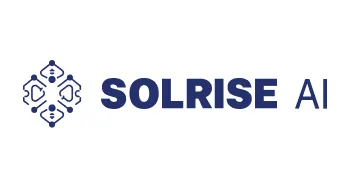What Should Go in Your Interior Design Intake Form
If you’ve ever had a design consult that felt scattered or unproductive, the issue probably started long before the meeting, it started with your intake process

A well-structured intake form can make the difference between a smooth client journey and one filled with confusion, missed expectations, and wasted time. The right questions not only help you gather the information you need, but also help clients feel confident that you’re organized, professional, and in control of the process.
Why an Intake Form Matters
Your intake form is more than a form. It sets the tone for the entire client experience. Done well, it gives you clarity before the first call, speeds up your onboarding, and filters out clients who may not be a good fit.
Without one, you're likely repeating the same questions over and over, scrambling to prepare for consults, and missing details that slow down your process.
These are the core elements we recommend including in every intake form, whether you’re working on full-service design, e-design, or staging.
1. Client Contact Information
Start simple. Make sure you collect full name, email, phone number, and preferred method of communication. You’ll use this information throughout your CRM and automations.
2. Project Location and Type
Get clarity on where the project is and what type of space it is.
Ask questions like:
- What is the address of the space?
- Is this your primary residence, second home, or rental property?
- What type of project is this? (new build, remodel, furnishing only, staging, etc.)
3. Timeline and Budget
Understanding urgency and budget from the start helps you plan resources and avoid sticker shock later.
Ask:
- When would you like to begin?
- Do you have a deadline?
- What is your approximate budget for this project?
4. Style Preferences
This section gives you an early look into the client’s taste. You can phrase this as a checklist or an open-ended prompt.
Examples:
- How would you describe your design style?
- Are there specific colors, textures, or materials you love or dislike?
- Share any Pinterest boards, Instagram accounts, or design photos that inspire you.
Pro tip: Let them upload photos or links directly in the form.
5. Function and Lifestyle
This part helps you go beyond aesthetics. You want to understand how the space will be used.
Ask:
- Who lives in the home?
- Do you have pets or children?
- How do you want the space to feel and function?
- What are your biggest pain points in the current space?
6. Services Requested
Give clients a clear way to tell you what they’re looking for.
Options might include:
- Full-service interior design
- Virtual design
- Space planning
- Color consultation
- Furniture sourcing
- Other (with a blank field)
7. Decision Makers and Red Flags
Avoid future delays by asking:
- Who will be involved in making final decisions?
- Have you worked with a designer before?
- Is there anything you’re concerned about as we begin this process?
These questions uncover potential roadblocks before they become problems.
8. How They Found You
Track your marketing efforts by asking:
- How did you hear about us?
- What made you reach out today?
This helps you fine-tune your lead sources and improve targeting over time.
Bonus: Legal Opt-In and Confirmation
Close the form with a simple checkbox confirming that the client understands this is an inquiry, not a commitment. If applicable, let them know when they can expect a response.
Takeaway
A strong intake form saves you hours of back-and-forth and sets a professional tone from the first touchpoint. It shows clients that you’re organized, intentional, and ready to guide them through the design process with confidence.
If you’re still sending PDFs or relying on casual emails to gather info, it’s time for an upgrade.
How to Deliver and Automate Your Intake Form
At SolRise AI, we build digital intake forms that plug directly into your website or CRM system.
When someone fills it out:
- You get an automatic email or SMS notification
- The lead is added to your CRM
- A follow-up email or confirmation is sent to the client
- You can trigger reminders or next steps automatically
This creates a consistent, scalable onboarding experience with zero manual effort.

